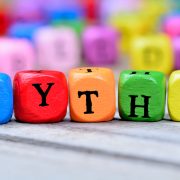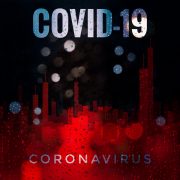How is a Self-Directed IRA Taxed?
You might have heard someone talk about their tax-free Self-Directed IRA at some time or another. Just to set the record straight, Self-Directed IRAs are arguably one of the finest vehicles for accumulating funds for retirement that anyone has ever devised. And while there are many benefits to opening one and contributing to it, freedom from taxes is not one of them.
It does not matter what type of Self-Directed IRA you choose; you will eventually pay taxes on it. You cannot decide if you will pay taxes, but you can decide when you will pay them. Some people prefer to pay up front, thinking that perhaps their tax rate will be higher at retirement. They choose to go with a Self-Directed Roth IRA.
Others take their tax write-off now and defer paying their taxes until the funds are distributed at retirement. Many of these folks believe their tax rate will be lower when they retire, so they are content to wait until then to pay up. They pick the Traditional IRA, and it is usually these Self-Directed IRA investors who mistakenly call them tax-free when what they mean is tax-deferred.
While no one should invest solely on tax advantages, it is a good idea to know the difference in how each type of Self-Directed IRA is taxed before you open an account. Here is the rundown on how each Self-Directed IRA—Roth and Traditional—is taxed so that you can decide which one makes the most sense for you.
You pay upfront with a Self-Directed Roth IRA
Self-Directed Roth IRA contributions are made with after-tax dollars. Unlike a Traditional IRA, you do not get to reduce your income—and your tax bill—by the amount you contribute. Your benefits come at retirement when you get to withdraw your funds without owing any taxes.
Another enticing benefit is that you can withdraw the earnings on your account without taxes. If you started contributing when you were young, those earnings could be quite sizable. Add in the money you will have saved if your tax bracket or rates increased by the time you retire, and it amounts to a big advantage for going with the Self-Directed Roth IRA.
The rules for withdrawing funds from a Roth are more liberal than for a Traditional IRA, but depending on certain factors, you might end up paying some taxes on your distribution.
Your Self-Directed Roth IRA withdrawals could be taxed
Generally, you can withdraw an amount equivalent to the contributions you made to your Self-Directed Roth IRA at any time without tax or penalty. Where it gets complicated is when your withdrawal includes some of your account’s earnings, such as dividends, interest, and capital gains.
If you withdraw funds after you turn 59 ½, your contributions are not taxed. Your earnings are also free of taxes as long as the Self-Directed Roth IRA has been established for at least five years.
If you make the withdrawal before age 59½ and it does not exceed the amount that you contributed over the years, there is no income tax due.
If you make the withdrawal before age 59½ and it includes earnings, you might have to pay both income tax and a 10% penalty on the earnings portion. There are exceptions: Funds can be distributed for higher education expenses or to buy a home. And if there is a hardship, such as permanent disability, you can withdraw your funds tax- and penalty-free.
You can defer taxes with a Traditional IRA
The rules are substantially different for a Traditional IRA. You are essentially funding it with pre-taxed earnings because you can deduct the amount of your contribution from your income, which defers the taxes you owe on it until you take a distribution at retirement. At that time the tax must be paid on both the contributions and the accumulated earnings.
Withdrawals from your Traditional IRA before age 59½ will result in a 10% federal penalty tax plus regular income tax on the entire withdrawal. If you make withdrawals between ages 59½ and 70½, you will owe taxes on the earnings and any contributions you originally deducted from your taxes, but there are no penalties.
With a Traditional IRA, you are required to take your first required minimum distribution (RMD) by April 1st of the year following the year you reach age 70½. After that, you must take your RMD by December 31. The RMD amount is based on your life expectancy and the value of your account. There is no RMD for a Self-Directed Roth IRA.
Interested in learning more about Self-Directed IRAs? Contact American IRA, LLC at 866-7500-IRA (472) for a free consultation. Download our free guides or visit us online at www.AmericanIRA.com.





